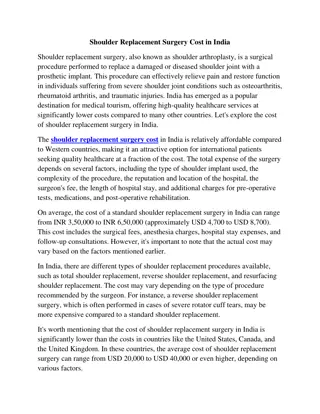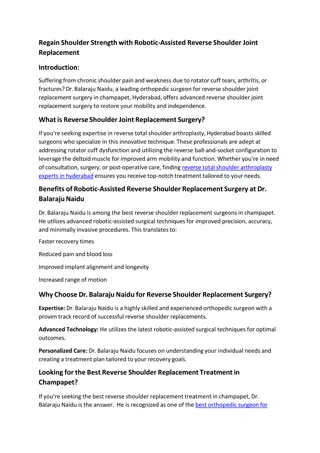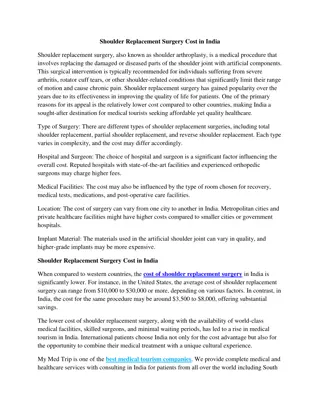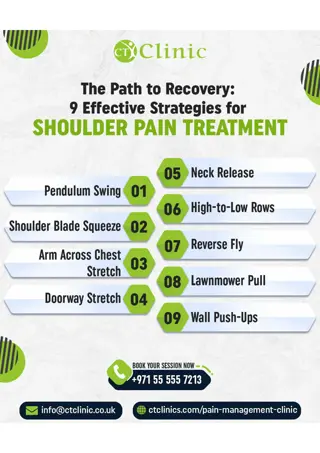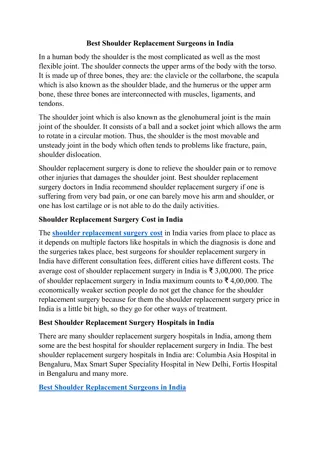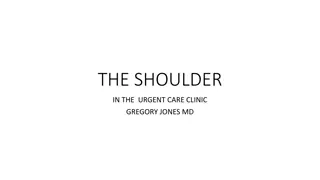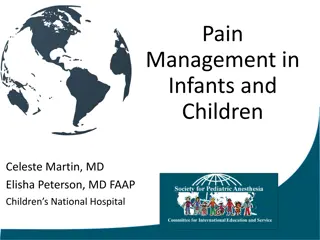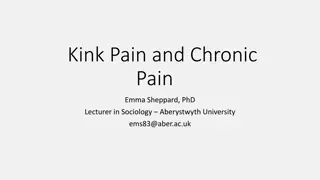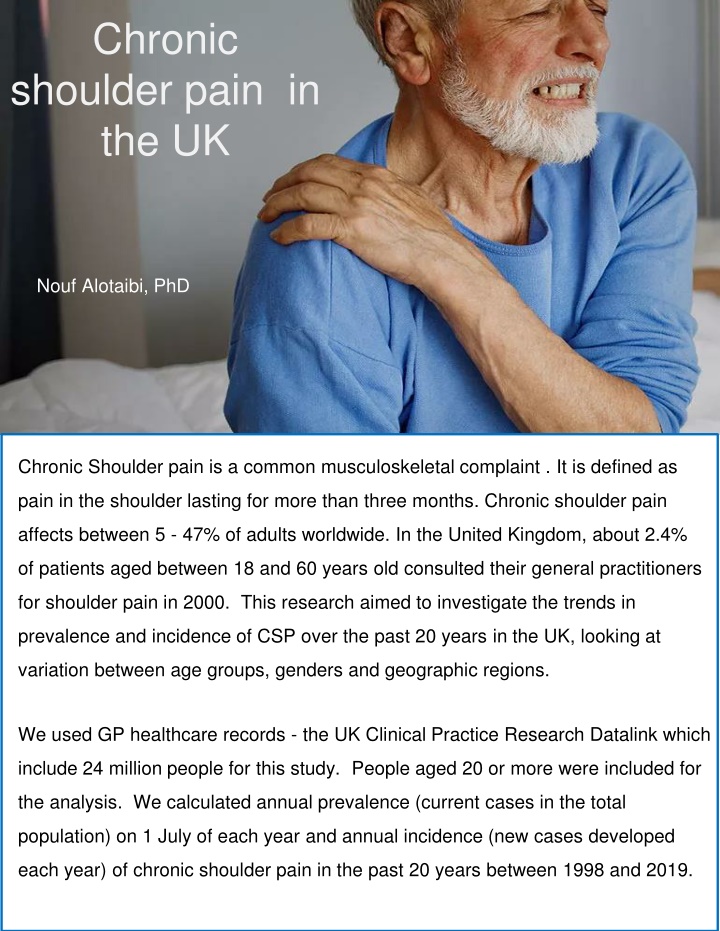
Chronic Shoulder Pain Trends in the UK Over 20 Years
Explore the prevalence and incidence trends of chronic shoulder pain in the UK over the past two decades. Discover how age, gender, and geographic regions impact the occurrence of this condition, providing valuable insights for healthcare strategies to alleviate shoulder pain burdens.
Download Presentation

Please find below an Image/Link to download the presentation.
The content on the website is provided AS IS for your information and personal use only. It may not be sold, licensed, or shared on other websites without obtaining consent from the author. If you encounter any issues during the download, it is possible that the publisher has removed the file from their server.
You are allowed to download the files provided on this website for personal or commercial use, subject to the condition that they are used lawfully. All files are the property of their respective owners.
The content on the website is provided AS IS for your information and personal use only. It may not be sold, licensed, or shared on other websites without obtaining consent from the author.
E N D
Presentation Transcript
Chronic shoulder pain in the UK Nouf Alotaibi, PhD Chronic Shoulder pain is a common musculoskeletal complaint . It is defined as pain in the shoulder lasting for more than three months. Chronic shoulder pain affects between 5 - 47% of adults worldwide. In the United Kingdom, about 2.4% of patients aged between 18 and 60 years old consulted their general practitioners for shoulder pain in 2000. This research aimed to investigate the trends in prevalence and incidence of CSP over the past 20 years in the UK, looking at variation between age groups, genders and geographic regions. We used GP healthcare records - the UK Clinical Practice Research Datalink which include 24 million people for this study. People aged 20 or more were included for the analysis. We calculated annual prevalence (current cases in the total population) on 1 July of each year and annual incidence (new cases developed each year) of chronic shoulder pain in the past 20 years between 1998 and 2019.
Findings We found that one in 100 people aged 20 or more in the UK have chronic shoulder pain. The risk increases with age and women are more likely to have this condition compared to men. While the prevalence increased, the incidence decreased in the past 20 years in the UK. The prevalence and incidence are different between UK areas with Yorkshire and East England at the highest, suggesting an unequal burden of the condition in the UK. Having insight into the burden of chronic shoulder pain in the UK might help to inform strategies to reduce the occurrence of this condition in the UK and to understand the impact of shoulder pain on primary healthcare utilization. The occurrence of chronic shoulder pain in UK areas in 2019 ( dark shades indicate high occurrence / Light shade indicate low occurrence)
Acknowledgment We would like to thank all participants for their involvement in this study, the University of Nottingham for sponsoring this project, Kuwait Cultural Office for the PhD studentship and Dr. Barbara Iyen for advice on the diagnosis of chronic shoulder pain. For contact: Nouf.Alotaibi@nottingham.ac.uk
Questions 1. Do you think the results were presented in a clear and understandable way? Yes/No . If no, How this could be improved ______________________ 2. Do you think this project is worth doing? Yes/No 3. Do you think this research will benefit patients with chronic shoulder pain, YES/No. if so, how? ____________________ 4. Is there any part of this study that needs to be improved or have we missed anything that you think important? ___________________________ For contact: Nouf.Alotaibi@nottingham.ac.uk

